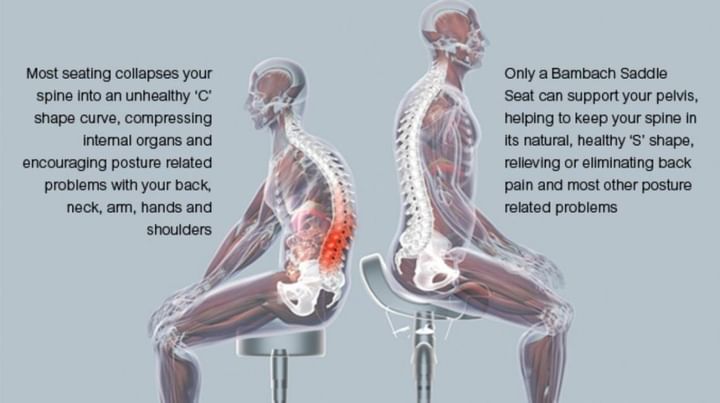Get the App
For Doctors
Login/Sign-up
Last Updated: Oct 23, 2019
BookMark
Report
Main Cause of Back Pain - Sitting for Prolonged Periods
SITTING FOR PROLONGED PERIODS
- Most people sitting for prolonged periods will eventually adopt a poor posture. 'When we sit in a certain position for a few minutes,the muscles that support our low back become tired and relax. Our body sags, and this results in the slouched sitting posture.
- If we maintain a slouched sitting posture for long enough, it will cause overstretching of ligaments. Thus pain will arise when we have been sitting in certain positions for prolonged periods. Once the slouched sitting posture has become a habit and is maintained most of the time, it may also cause distortion of the discs contained in the vertebral joints. Once this occurs, movements as well as positions will produce pain.
- It follows that people with sedentary office jobs easily develop low back problems as they often sit with a rounded back for hours on end. If you are a sedentary worker, you may go through the following stages of gradually increasing back problems unless you take steps to rectify the cause. At first you may only experience some discomfort in the low back while sitting for a prolonged period of time, or on arising from sitting. In this case the pain is caused by overstretching of soft tissues, and it takes a few seconds for these tissues to recover. The pain at this stage is short lived.
- At a later stage you will find that on standing up you have increased pain, and must walk carefully for a short distance before you can straighten up fully. Now it is likely that some distortion has occurred in one of the lumbar discs: prolonged sitting has led to minor distortion of the affected disc, which needs a few minutes to recover.
- Eventually you may reach the stage when you frequently experience acute or agonising pain on standing and are unable to straighten up at all. In this case there is a major distortion in the affected disc, which cannot regain its normal shape quickly enough to allow pain free movement. Whenever a movement is attempted, the disc bulge increases the strain on the already overstretched surrounding tissues. In addition, the disc bulge may pinch the sciatic nerve,which may lead to pain and other symptoms in the leg.



+1.svg)
